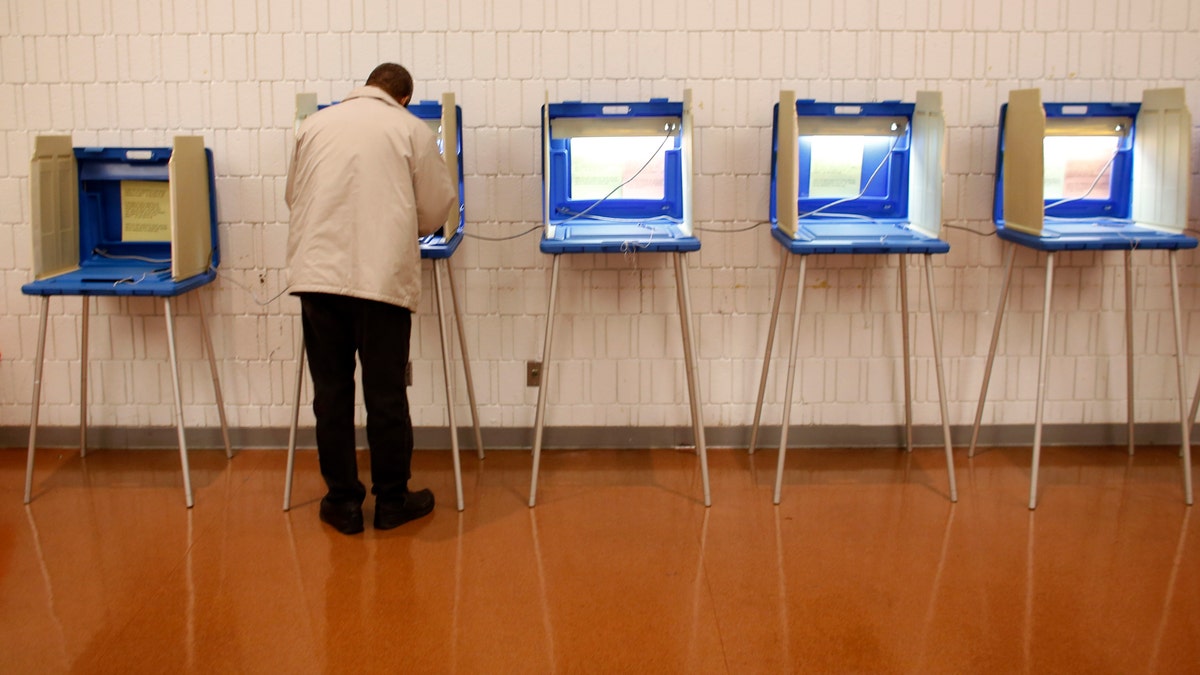
MILWAUKEE, WI - NOVEMBER 06: A man casts' his ballot in the U.S. presidential election on November 6, 2012 in Milwaukee, Wisconsin. As Americans are heading to the ballots, polls show that U.S. President Barack Obama and Republican presidential candidate Mitt Romney are in a tight race. (Photo by Darren Hauck/Getty Images) (2012 Getty Images)
Numbers are telling a clear story this presidential election — 2016 is positioned to be the most diverse electorate in American history. Just look at the data: this year, 27 million Latino and 3.9 million Asian-American voters will be eligible to cast a vote. Combined with African Americans, minorities aren’t so minor anymore. They are poised to make up 31 percent of voters on Election Day, a decisive role that we will first glimpse in Nevada.
[The 2016 election] will likely be the country’s first glimpse in this cycle into a crystal ball that will show Americans what the not-too-distant future will look like — and how they’ll vote. Non-white voters are crucial to choosing not just this President but every future President at increasing rates.
In the next two weeks, first and second-generation American voters, including hundreds of thousands of Latinos and Asian-Americans, will have an opportunity to play a key, some would say decisive, role in Nevada’s Presidential caucuses for both parties. They will demonstrate their collective power to turn out and unhesitatingly hold candidates responsible for their words and actions on the campaign trail — while also using their voting bloc to help candidates who advocate for all communities win.
The Silver State is remarkable because it will be the first truly representative glimpse into how Americans will react to the 2016 candidates, with the newest demographic reality in place. The state’s African-American, Asian-American and Latino populations are on the rise, and currently number 9.1 percent, 8.3 percent, and 27.8 percent, respectively.
In addition, nearly 20 percent of Nevada’s residents are foreign-born. It will likely be the country’s first glimpse in this cycle into a crystal ball that will show Americans what the not-too-distant future will look like — and how they’ll vote. Non-white voters are crucial to choosing not just this President but every future President at increasing rates.
United in our concerns, the new American majority will continue to demand that our country’s leaders reflect the nation’s shifting culture and genuinely connect with communities of color on our issues. For Latinos and Asians, job creation with living wages ranks as a top issue. Both communities also care about immigration, healthcare, education, workers’ rights, and climate change. Together, these communities, the fastest growing immigrant groups in the country, help to form the new American majority. The might of our electoral power will match any increasing extremism with the power of our ballots.
- Not just black and white, South Carolina’s Latino voters a growing political force
- Cruz could be first Hispanic U.S. president – not that he would ever say so
- Leading national Latino voter group endorses California’s Loretta Sanchez for U.S. Senate
- Rubio’s rough week continues after candidate cracks tooth on Twix bar
- Xavier Becerra attacks Bernie Sanders on Twitter over immigration record
- Clinton campaign’s comment that Nevada is ‘80% white’ angers some Democrats
- ‘Hamilton’ blows the Grammy night away
- Pope Francis visits heart of Mexico’s ruthless drug-trafficking country
Yet, many presidential candidates seem not to have gotten the memo. Several, including some front-runners, continue to support anti-immigrant legislation and employ messaging that diminishes, demonizes and degrades immigrants and all new American communities. This is not just bad for the country but bad for the future of their own political parties. Furthermore,candidates using this rhetoric should tune in to the fact that it will not suppress the minority vote.
In fact, especially among Latinos, anti-immigrant rhetoric may lead to higher turnout. For example, in Arizona, Latino voters are believed to be responsible for the recall of State Senator Russell Pearce in 2012, in response to his anti-immigrant stance and support of SB 1070, commonly known as the “Show me Your Papers” law.
In the 2016 election cycle, despite some superficial talk of voter diversity, we’re missing the real point and the powerful potency of the new American majority — how voters are united around core issues and a desire for recognition and validation.
New American voters including Latinos, Asian Americans, and other immigrant groups will be critical to ensuring that our government works to meet the needs of all of its citizens not just the few in power. In short, rhetoric and legislation that’s intended to dampen participation and keep diverse, minority communities in the shadows will actually backfire.
Candidates who underestimate our communities’ determination to be included and heard do so at their own peril.
